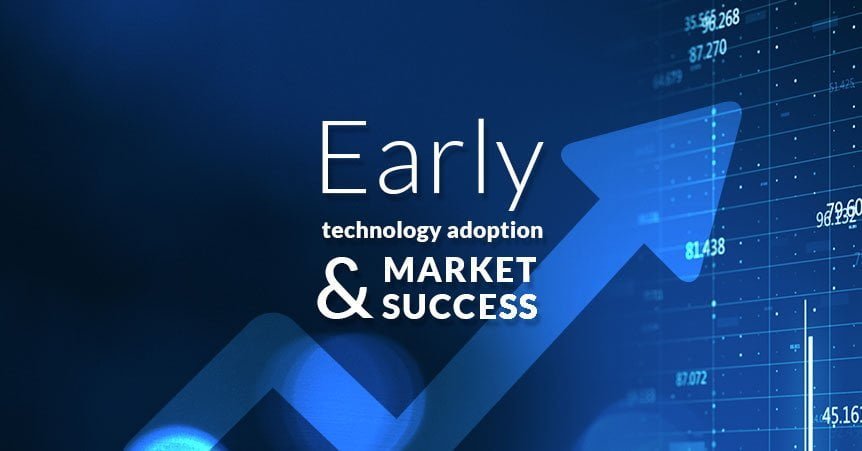Is there a reason why are the early adopters more successful than those who lag behind? Today innovative technology plays a vital role in every industry. It leads to new opportunities and new approaches to problem-solving. But adopting new technology can be a tricky decision. Startup founders and decision-makers want to mitigate their risks while using opportunities to stay ahead of their competitors. The technology adoption curve can explain why early adopters have a higher probability of success.
Crucial Role of Early Adopters in Technology Adoption Curve
Any new technology goes through a predictable adoption trajectory when it comes into the market. The Diffusion of Innovation theory, developed by Everett Rogers in the 1960s, explains how innovative ideas and technologies spread across consumers. The same model can be used to understand the effect of technology adoption on companies.
According to the Diffusion of Innovation thesis, there are five types of technology adopters:
- Innovators (2.5%): Innovators are risk-takers excited by new technology and want to try it out regardless of the consequences.
- Early Adopters (13.5%): Early adopters are the second phase group who observe the response of the innovators and provide the critical support to spread the technology. They are the ‘thought leaders’ or ‘influencers’ in the community.
- Early Majority (34%): Early majority adoption signifies the start of mass-market acceptance.
- Late Majority (34%): Late majority adopters invest in technology that has been thoroughly tested. They do not want to take on any additional risks.
- Laggards (16%): Laggards are highly averse to change. They adopt technology only when they have no options to keep using their outdated ones.
When companies adopt a technology product before it becomes a mass-market product (around 50% adoption), they have a better chance of dominating the market. They enjoy the first-mover advantage, leading to higher revenue and a better market position.
Differences Between Innovators and Early Adopters
Both innovators and early adopters take risks to embrace new technology. But innovators have more high-risk propensity. They are the startups that are first in line to implement new technology. On the other hand, early adopters are more calculated risk-takers.
Some of today’s largest companies were early technology adopters as small startups, and they prevailed over innovators. Here are some examples:
- Altair, developed by MITS, was the first personal computer, but the Apple Computer cornered the market as an early adopter.
- The early 1990s saw search engine innovators like Archie, Excite, Lycos, and Infoseek, but Google became the de facto search engine.
- The Stanford Federal Credit Union is credited as the organization first to provide a digital payment option, yet as an early adopter, PayPal dominates the industry today.
Early adopters have an opportunity to learn from the mistakes of innovators. They can tailor their products and services to serve their target audiences better.
Advantages of Early Technology Adoption
Here are some of the reasons early technology adoption is a lucrative business strategy:
Less Competition: Early adopters are ahead of mass-market adoption, so they have less competition for their products and services. Their competitors have to play catch-up.
Capture Larger Audience and Revenue: The technology stacks of early adopters are ready to solve user problems, so organizations have an opportunity to serve more customers as soon as the market is prepared for mass adoption. They can use their early adoption position to build brand loyalty leading to future revenues.
Accelerated Growth Momentum: Even though innovators and early adopters take high risks, they reap high rewards. When the market matures, the growth trajectory for the company accelerates.
Early Adoption Can Lead to A Better Future for Payments
Early adoption ensures businesses stay relevant for years to come. It gives organizations a competitive edge and increases the possibility of achieving market dominance. According to the PwC Payments 2025 & beyond report, six macro trends will affect the future of payments: inclusion and trust, digital currencies, digital wallets, battle of the rails, cross-border payments, and financial crimes. Startups in the financial services industry should pay attention to these trends as they will require investment in the latest technologies. Payment processing organizations must define their early technology adoption strategies to take advantage of the new market realities and ensure future success.
